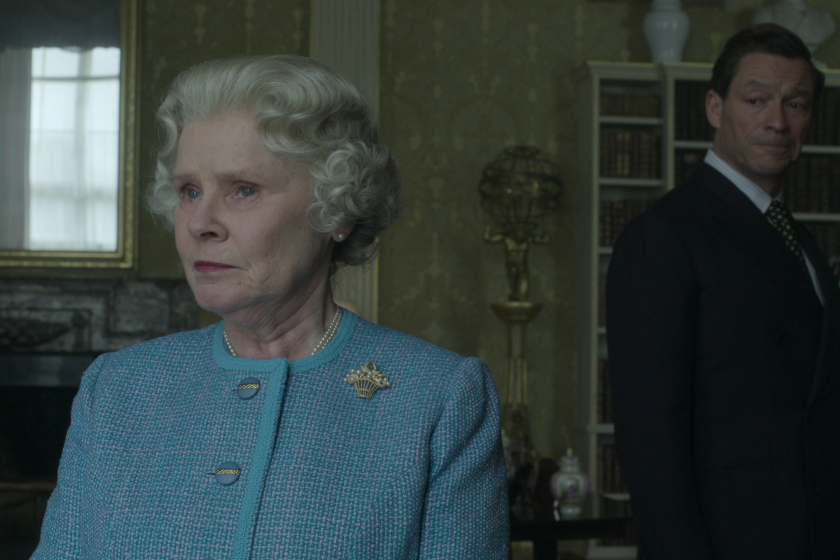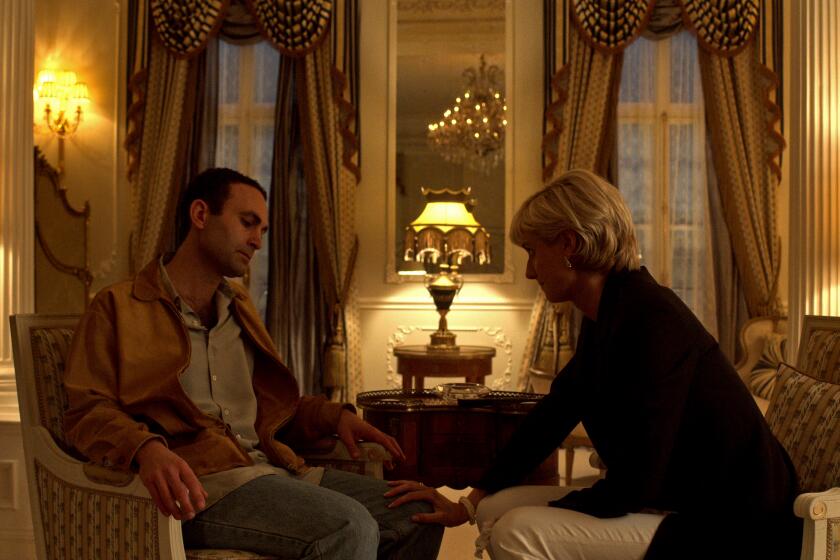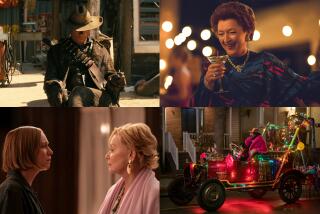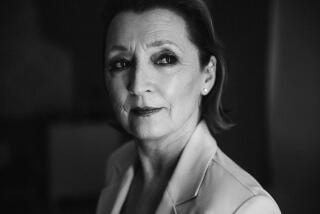‘The Crown’ ends with Charles and Camilla’s wedding and an emotional farewell to Queen Elizabeth II
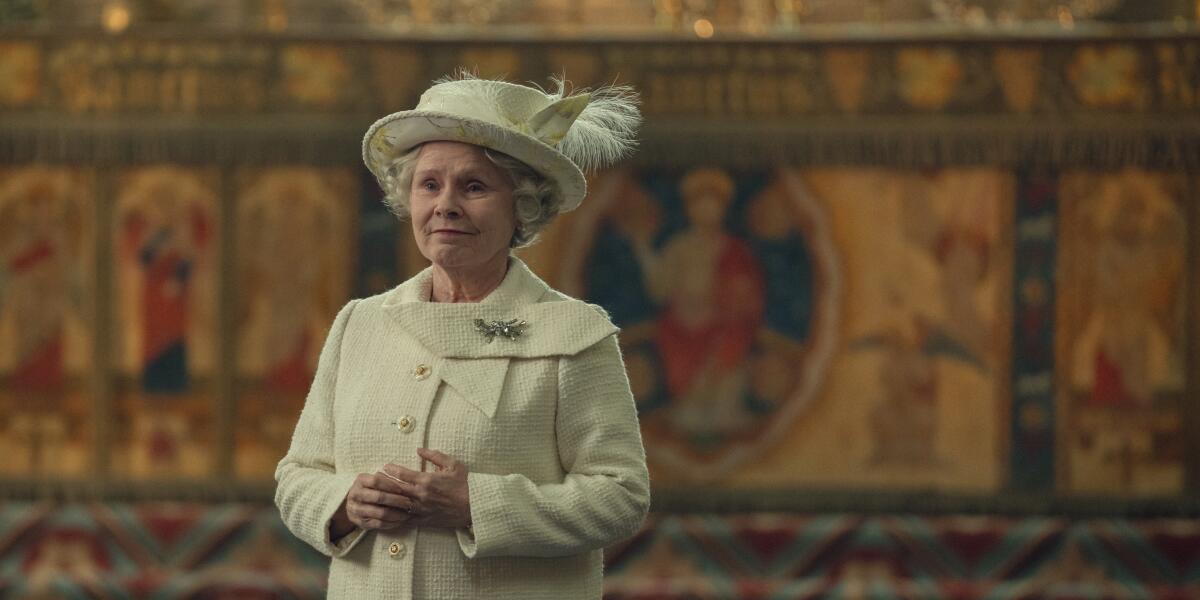
- Share via
After six seasons and three casts, “The Crown” has come to a close. The ending has been in creator Peter Morgan’s mind since the beginning, although it shifted slightly after the death of Queen Elizabeth II. Producer Suzanne Mackie remembers Morgan telling her 10 years ago that he wanted to end the series in 2005, the year Charles, Prince of Wales finally married Camilla Parker Bowles.
“There was something really special about it,” Mackie says of the wedding, which took place on April 9, 2005. “It felt like peace had been restored to the land after tumultuous times — the tragic death of Diana and lots of divorcing children and the fire at Windsor. It felt like a beautiful end chapter.”
The finale, “Sleep, Dearie, Sleep,” directed by Stephen Daldry, uses the proposal and the wedding as a backdrop for several conclusive scenes. The queen (Imelda Staunton) considers her position, questioning whether she should abdicate the throne for her son on the occasion of his marriage. She and Prince Philip (Jonathan Pryce) also begin to plan their funerals, which results in a contemplative final moment for the queen.
Part 2 of the Season 6 is out now. Here’s what you need to know about the Netflix series that centers on the British royal family, including Prince Charles, Camilla, Queen Elizabeth, Prince Harry, Prince William, Kate Middleton and more.
“The final episode is not really about the Charles/Camilla wedding,” Morgan said, writing via email. “That was just an event or a pretext for us to play the main drama against. The real drama is an internal one for the queen as she wrestles with her conscience about whether to step down in favor of a resolved and happy Charles.”
While the ending itself is bittersweet, the series creatives liked the idea of concluding “The Crown” on a relatively positive note.
“Although it’s an extraordinary family and a world that most of us don’t know or understand, they are a family,” Mackie says of the British royals. “And that family was brought together by a happy, celebratory event and two people who loved each other getting married and making vows in front of the country.”
For Dominic West, who has played Charles for two seasons, it felt full circle.
“‘The Crown’ is about the three people who are wearing or are going to wear the crown, which is Elizabeth, Charles and William,” he says. “It had to round off Charles’ story, particularly after showing Diana’s tragedy in such detail. The wedding was a great way of letting us see the reality of it. But actually where it ends is, of course, is back with Elizabeth on her knees in that church praying, which is pretty much how it began.”
The proposal
There is no documentation of Charles’ proposal to Camilla. The scene was originally written to take place in a rose garden, but Olivia Williams, who plays Camilla, suggested setting it in the potting shed instead.
“I did some dodgy bit of research where during lockdown she and Charles had an informal competition as to who could grow the best vegetables,” Williams says. “I did actually push for mucking out the stables, but that has already been done in that episode by the queen.”
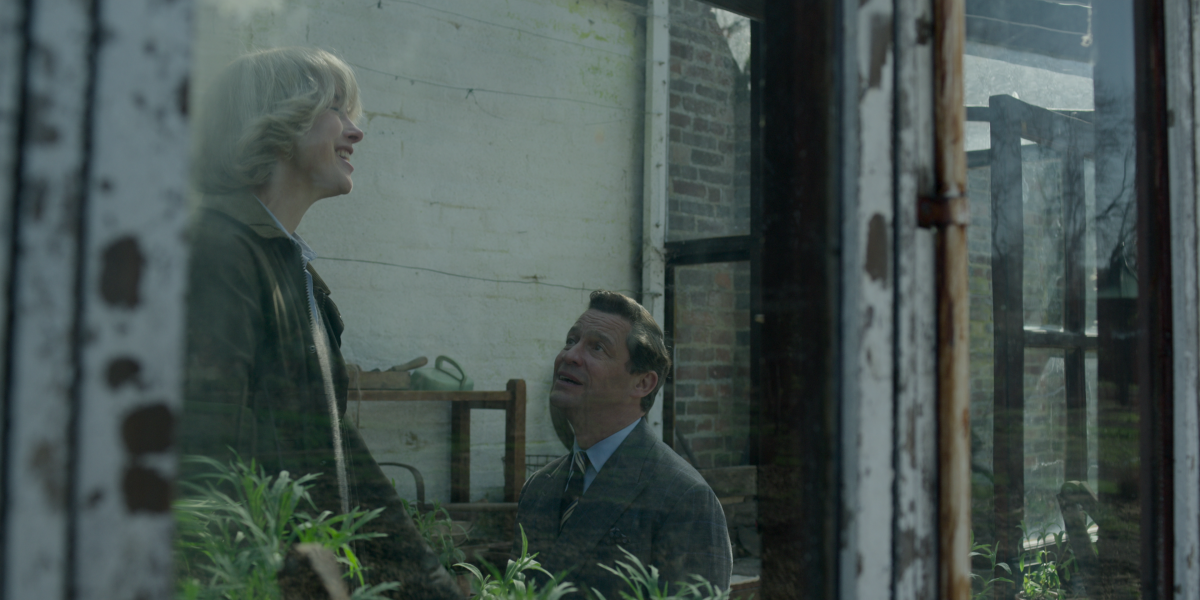
West, who calls the proposal scene “totally imagined,” credits Williams with the idea of Camilla listening to BBC Radio 4 show “The Archers” while smoking when Charles arrives.
“Olivia set the scene for that,” West says. “I think Peter rather liked the fact that Charles would kneel down in the dirt of the potting shed and ask her to marry him. There’s something intensely moving about their middle-aged love.”
The actor also recalls shooting “endless scenes of him running through gardens to try to find her.”
“We went to three different gardens,” West says, laughing. “But I noticed that ended up on the cutting room floor.”
The perception
On Feb. 10, 2005, the palace announced that Charles would marry Camilla at Windsor Castle. Although it was now several years after Diana’s death, the British people were divided.
“When they announced their engagement there was a sense that times were changing and, yes, he should be with the woman he loved,” says royal writer Kerry Parnell, who helms the newsletter the Royal List. “But the overriding issue that was in all the newspapers at the time was what would Camilla be called? There was a lot of debate about whether she would be queen one day.”
The first part of Season 6 of Netflix’s “The Crown” examines Princess Diana’s final weeks from her perspective and the media frenzy that ensued after her death.
Melanie Bromley, a former news correspondent for E!, recalls that the upset over Camilla and Diana created a “public soap opera.” But there was a sense that Charles deserved happiness.
“This was a love story that had endured 30 years,” Bromley says. “It didn’t matter whether there was going to be public opposition or people disagreed or the papers had a criticism over it because, actually, he loved her.”
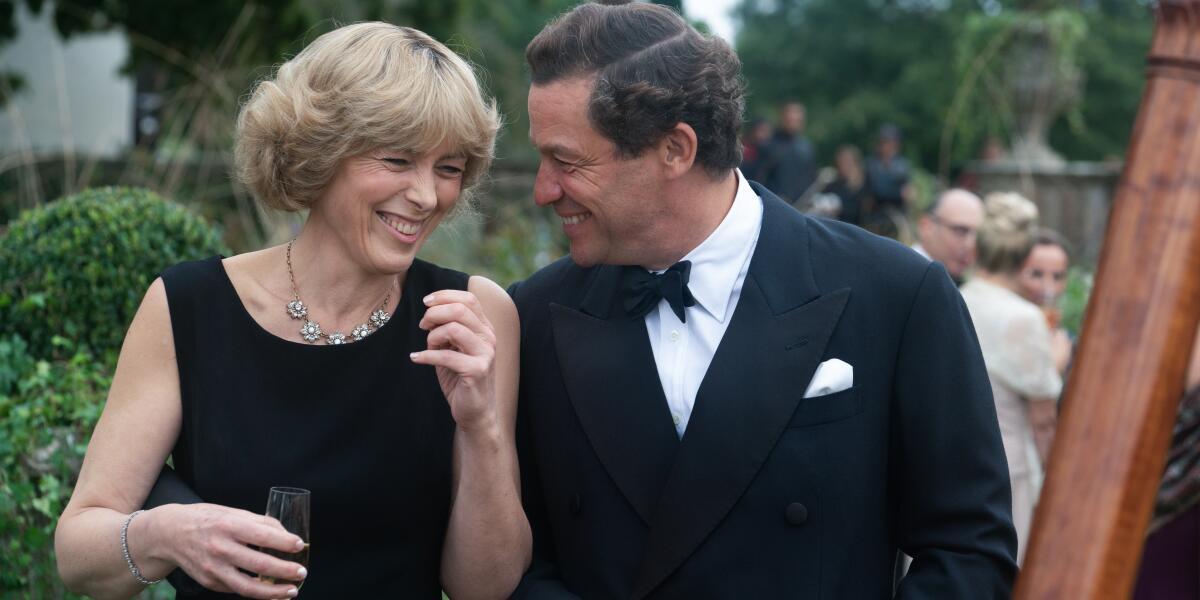
The royal family has always married in religious ceremonies, but Charles and Camilla were both divorced, so it was agreed they would have a civil ceremony at the registry office followed by a service of prayer and dedication. At the time, it was a big deal for the future king to marry a divorced woman. (More recently, Prince Harry did it without issue, notably in a religious ceremony.)
“It’s funny how 20 years is a long time and it’s no time at all,” Williams says. “I think the Church of England were desperately trying to hang on to some sort of moral position on divorce.”
Williams and Morgan both wanted to showcase Camilla’s dignity despite all the drama.
“Peter wanted to portray her as someone that had been very steadfast in her quiet dedication to Charles and in her devotion,” Mackie says. “She kept her head down and Peter really wanted to capture that.”
“When she became queen, everyone turned around and went, ‘Oh, my God, what a journey she’s come on,’” Williams adds. “Speaking as an actor, others got more thrilling things to do. But I do think my character had the biggest arc of the show from Gloucester housewife to queen of England.”
The ceremony
The wedding scenes were shot in May, at the tail end of production on “The Crown.” The town of Rochester, England, stood in for Windsor, where Charles and Camilla had a civil ceremony at the Windsor Guildhall. The York Minster was used as St. George’s Chapel for both the service of prayer and for the final reflective moments with Queen Elizabeth II.
“I knew we’d end on the wedding,” West says. “But I didn’t know we were going to be in the York Minster with 400 extras and an orchestra and a full choir and 30 ornamental cherry trees and me and Olivia Williams processing down the aisle and 400 people bowing to us.”
Williams adds that in real life, she was married above an Italian restaurant on Shaftesbury Avenue in the West End of London, so it was a “thrill” to marry West in York Minster.
“It was an incredibly grand occasion and an amazing thing to shoot,” she says. “Every time Dominic and I moved anywhere, the orchestra would start playing Handel’s ‘Water Music.’”
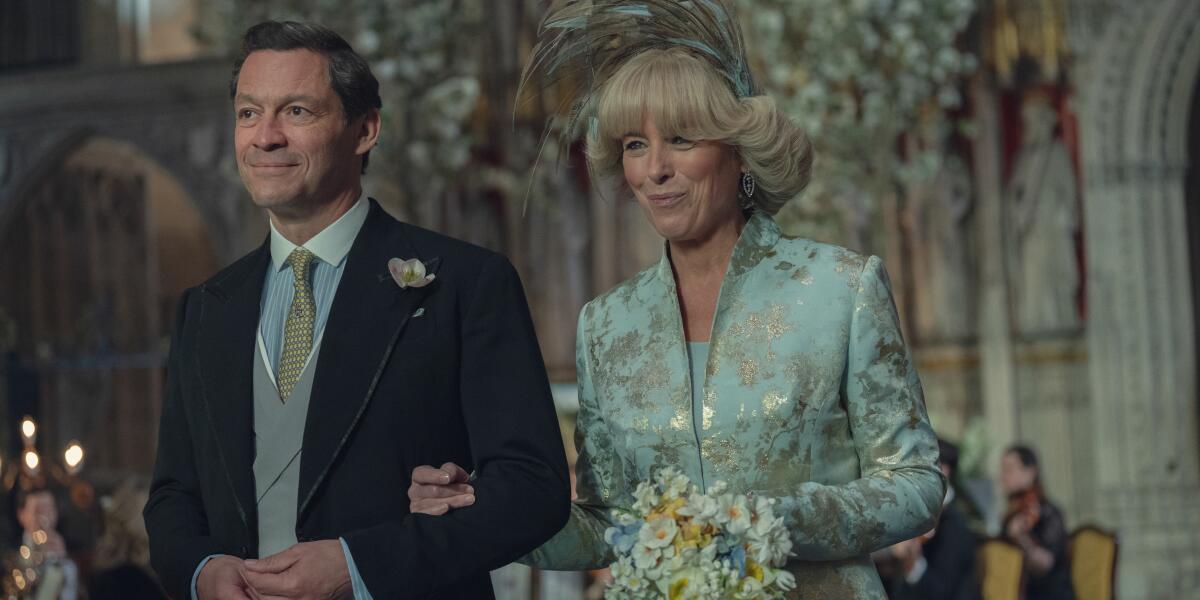
As the episode depicts, a crowd gathered in Windsor on the day of the wedding. Bromley says that while it was “very pared down,” there were still around 20,000 people there.
“It was much more low key, but people were still very happy for him and happy he had found his real fairy tale romance,” Bromley says.
The princes really did arrive to the ceremony by bus and, despite the crowd, there was much less fanfare compared to other royal weddings, especially Charles’ first marriage.
“That came from the palace because they knew it wouldn’t be appropriate,” Parnell says. “Charles and Diana’s wedding was the fairy tale wedding to end all weddings. It was enormous — the scale of it, the size of her dress, everything. So they didn’t want to do anything to compete with that in any way.”
Mackie adds that while it didn’t feel as grand, it was “intimate and very real.” “It felt maybe closer to the rest of us,” she says.
The moment where Charles and Camilla emerge from the Guildhall onto the street of Windsor was the last scene ever filmed for “The Crown.” Williams says it was a “euphoric moment,” both for the actors and the crew, many of whom had worked on the series for 10 years.
“There was a jazz band playing and 400 extras waving their flags,” West adds. “As soon as they said ‘cut’ we all started dancing. It was an incredibly celebratory feeling and a wonderful way to end.”
The celebration
During the real-life reception, the queen gave a speech to celebrate Charles and Camilla. While there isn’t footage of the actual speech, observers have recounted its humor. In the episode, it’s suggested that the monarch was wrestling with whether to abdicate the throne and announce Charles as her successor at the wedding, but there’s no historical evidence to suggest that was true.
“It’s fair to say it’s more thematic,” Mackie says. “It’s a very private dilemma that we imagine any human being would face, so it was an imaginary internal conversation. I think Peter just wanted to have it as a theme to wrestle with. Because it is interesting when you have a very eager and healthy and brilliant young man that is Prince Charles eagerly waiting to become king.”
The speech Staunton gives, which begins with her announcing the results of the Grand National horse race, was written by Morgan.
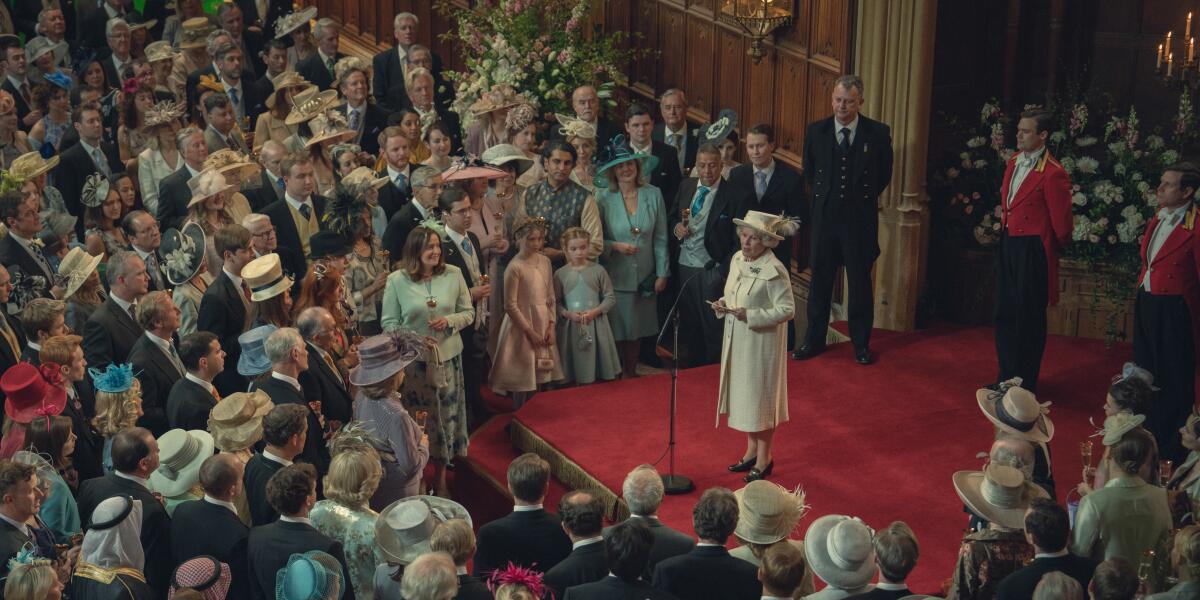
“You do feel that’s the sort of speech she probably gave,” West says. “I thought that was a brilliantly written and brilliantly performed scene by Imelda. It was Peter at his most imaginative. If she were to have done that it wouldn’t have been in a public place. But that wouldn’t have been nearly as dramatic.”
During the speech, the queen offers Camilla her blessing and acceptance. That moment mirrors the attitude of the country after the wedding.
“It was a very significant step on the path of rehabilitation to Camilla,” Parnell says of the event. “They must have been immensely relieved. And Camilla is really loved now.”
The farewell
Queen Elizabeth II died in the middle of production on the final season, so it was inevitable that her death would impact the ending. Mackie says the team had provisions in place to pause shooting when the death was announced. But on the day of the queen’s funeral, production paused again.
Many of the cast members and crew gathered to watch the proceedings. Everyone was struck by the lone bagpiper in the gallery at Westminster Abbey, which Mackie calls the “most exquisite, simple, beautiful, poetic thing I’d ever heard and seen.”
“We knew we had to somehow harness that and bring it into the end of the episode,” Mackie says. “I don’t think it felt engineered so much as deeply felt.”
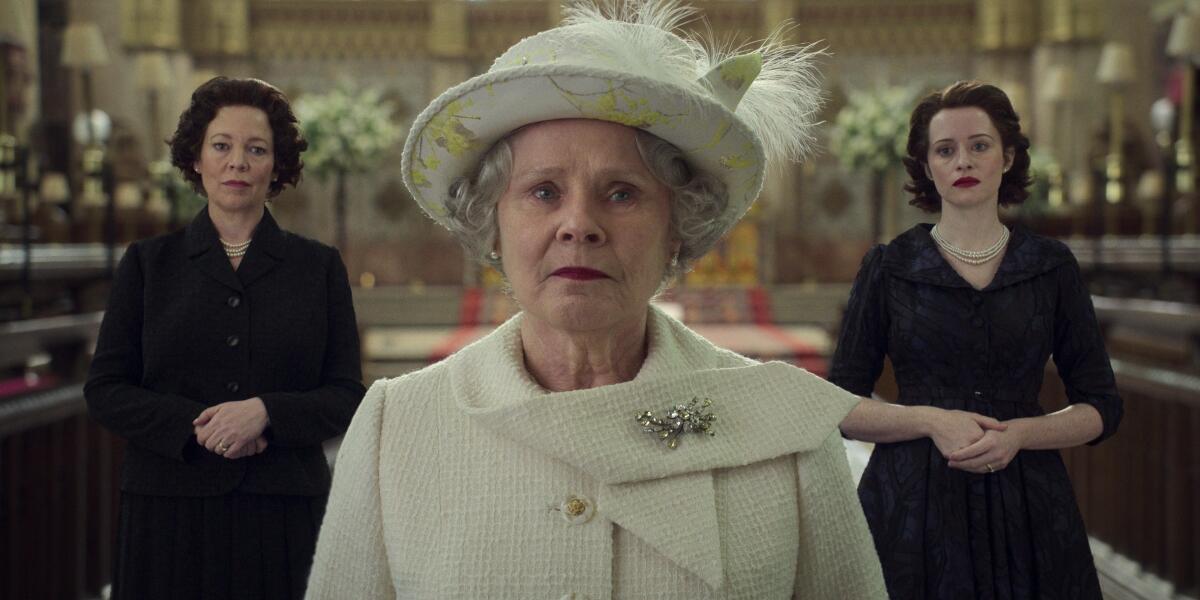
After Charles and Camilla get their happy ending, the queen lingers in St. George’s Chapel. She reflects on her duty and imagines her funeral before exiting in a dramatic haze of light. Also making an appearance are Olivia Colman and Claire Foy, who played younger versions of the queen in the series.
West, who says Morgan didn’t write the finale until after the queen’s death, was deeply moved by the bagpipe player in the episode, which takes its name from the song he performs.
“It’s an incredibly moving moment,” West says, wiping away tears as he speaks. “I’m not particularly into the queen, but I can’t stop crying. It was really, really beautiful. Peter is such a magpie for a great, telling piece of theater. And Daldry has this great instinct for tugging on our heart strings. That piper did it for me.”
More to Read
The complete guide to home viewing
Get Screen Gab for everything about the TV shows and streaming movies everyone’s talking about.
You may occasionally receive promotional content from the Los Angeles Times.
